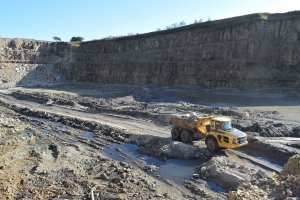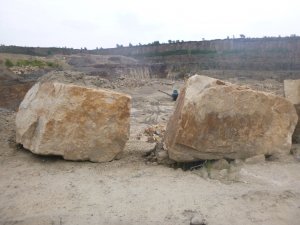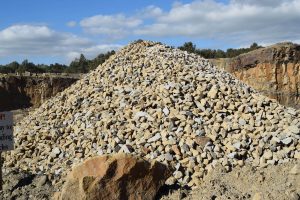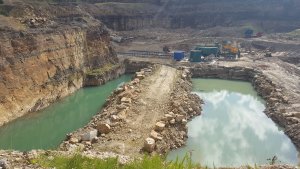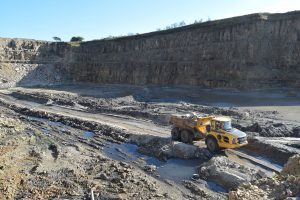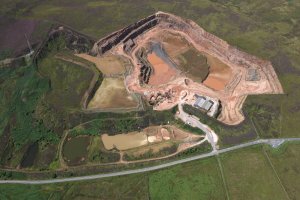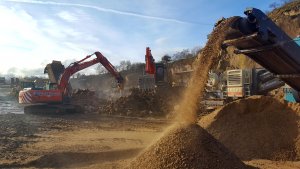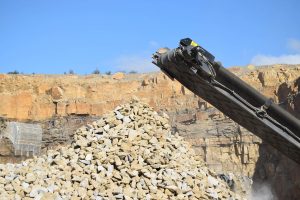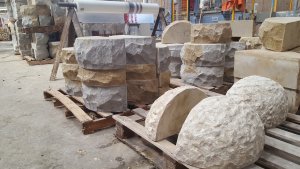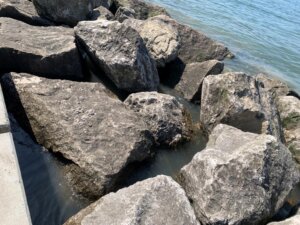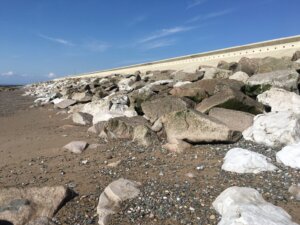What is the Difference Between Concrete and Cement?
Even though concrete and cement are totally different things, it is very common for people to get them mixed up.
We frequently encounter this confusion, so we’ve created this guide to clarify their differences. In this article, we’ll explore what makes cement and concrete unique, how each is produced and used, and why understanding these differences is essential for choosing the right material for your project.
What is Cement?
Cement is a fine, powdery substance that, when combined with water, acts as a powerful binding agent. It’s created through a process called calcining, where materials such as limestone, clay, and silica are heated to high temperatures.
The primary ingredients of cement include limestone, clay, silica, and alumina, which together create a compound that solidifies upon hydration. This hardening process is what gives cement its strength and makes it the crucial ingredient in many building materials.
Cement’s binding properties make it incredibly versatile, especially when mixed with other materials. Without cement, many essential construction materials wouldn’t have the stability or durability they need to withstand time and weather.
In our production process, we use only the highest quality materials to ensure that the cement produced meets our exacting standards.
Types of Cement
While there are several types of cement, Portland cement is by far the most widely used. Known for its versatility and strength, Portland cement is the standard in concrete production around the world.
At Armstrongs, we rely on CEM I, a top-grade Portland cement, in our concrete production. CEM I is a pure form of Portland cement, free from other additives, which makes it ideal for projects where strength and durability are paramount.
Other types of cement include quick-setting cement, which is used for rapid repairs, and white cement, which is chosen for aesthetic purposes. Each type has its unique properties, but Portland cement remains the foundation of most concrete mixes due to its resilience and consistency.
Uses of Cement
Cement’s primary role is as a binder in concrete, mortar, and plaster. In concrete, cement binds with aggregates and sand to create a rock-solid structure, making it indispensable in constructing buildings, bridges, and other infrastructure.
But cement also stands alone in various applications. We use cement in masonry work for grouting and repairs, and it’s equally useful in producing mortar for bricklaying and plaster for wall finishing.
At Armstrongs, we use cement for a wide range of applications, ensuring that each product is crafted to provide strength and durability. Whether it’s concrete production, masonry, or specialist applications, we rely on the best quality cement to meet the specific needs of each project.
What is Concrete?
Concrete is a composite material made by combining cement with water, sand, and aggregates such as gravel or crushed stone. Cement acts as the binding agent, holding the mixture together as it hardens into a solid structure.
This mixture gives concrete its renowned durability and versatility, making it ideal for countless construction applications. While cement provides the adhesive properties, the sand and aggregate give concrete its strength, stability, and ability to withstand heavy loads and various environmental factors.
Without these additional materials, cement alone wouldn’t have the same structural resilience.

The Concrete Mixing Process
The production of concrete begins with the precise mixing of cement, water, sand, and aggregates. This process initiates a chemical reaction called hydration, in which cement reacts with water to form a solid, rock-like structure.
Hydration is essential to concrete’s strength, as it forms bonds that lock the aggregates into place, resulting in a stable, durable material. Sand and aggregate contribute to concrete’s compressive strength, reducing shrinkage and cracking while enhancing its stability.
At Armstrongs, our expertise in concrete mixing ensures that our products meet the rigorous demands of modern construction.
Uses of Concrete
Concrete is one of the most widely used materials in construction, valued for its durability and versatility. Its applications range from structural foundations, walls, and bridges to pavements and roads.
At Armstrongs, we’re proud to provide high-quality ready-mixed concrete through our subsidiary, AMIX Concrete. Our concrete products are tailored to meet a variety of project specifications, whether it’s for large-scale infrastructure or smaller residential applications.
By offering ready-mixed concrete, we provide a solution that is both efficient and reliable, allowing contractors to focus on quality and precision in their builds.

Cement vs. Concrete: Understanding the Key Differences
One of the primary distinctions between cement and concrete lies in their composition. Cement is made from materials like lime and clay, which are calcined to produce a fine, dry powder. On its own, cement acts as a binder.
Concrete, on the other hand, is made by combining cement with water, sand, and aggregate, resulting in a composite material that’s strong and durable. Essentially, cement is an ingredient within concrete, not a standalone construction material.
Recognising this relationship helps clarify why cement is often confused with concrete, even though they serve different roles.
Production Process
Cement production involves heating raw materials at high temperatures to create a fine powder, while concrete production requires mixing this cement with water, sand, and aggregate. When water is added to cement during the concrete mixing process, it triggers hydration, which causes the mixture to harden.
This key difference in production highlights how cement and concrete each contribute uniquely to construction: cement provides the adhesive quality, and concrete forms the solid, load-bearing structure.
Physical Properties and Appearance
Cement and concrete differ significantly in appearance and physical properties. Cement is a fine, dry powder, while concrete is a coarse, solid mixture containing aggregate. Concrete’s composition makes it incredibly strong and suited for load-bearing applications, while cement alone lacks the stability required for such uses.
The addition of aggregate in concrete increases its compressive strength, allowing it to support buildings, bridges, and other substantial structures. At Armstrongs, we take pride in crafting concrete that can withstand heavy usage, weather, and time.
Cost and Availability
Concrete tends to be more cost-effective than cement when used in large quantities due to its durability and structural benefits. Cement on its own, without the additional materials, lacks the strength and stability needed for construction.
This is why cement is rarely used alone in construction but is instead combined with aggregates and water to form concrete, a more versatile and widely available building material.
The Role of Cement in Concrete
How Cement Acts as a Binder
Cement serves as the essential binding agent in concrete. When mixed with water, it undergoes a chemical process called hydration, which transforms the mixture into a hard, rock-like structure.
This process creates bonds that lock the aggregate and sand into place, allowing concrete to solidify and retain its shape.
Over time, these bonds strengthen, making concrete more durable and resilient with age. Cement’s role as a binder is crucial, as it enables concrete to become a reliable, load-bearing material, suitable for everything from foundations to large infrastructure projects.
How the Cement-to-Water Ratio Affects Concrete
The cement-to-water ratio in a concrete mix has a significant impact on the quality, strength, and durability of the final product. A well-balanced ratio ensures that the concrete has the right consistency for easy handling while maintaining enough strength once it sets.
Too much water, however, can weaken the concrete by creating excessive voids in its structure, leading to cracks and reduced durability over time. On the other hand, too little water makes the concrete difficult to work with and prevents complete hydration, weakening its overall strength.
Finding the correct balance is essential for producing high-quality concrete that can withstand the demands of construction and environmental exposure.
Choosing Between Cement and Concrete
When to Use Cement
Cement is primarily used on its own for small repair and bonding tasks, such as patching up cracks, grouting, or masonry repairs. Its adhesive qualities make it suitable for joining materials or creating a base for tiles or bricks in DIY projects.
However, because it lacks the strength and durability provided by aggregates, cement alone is not ideal for larger or structural projects. For tasks that require binding or filling in small spaces, cement is often the material of choice.
When to Use Concrete
Concrete is the preferred choice for structural applications that require durability and load-bearing capacity. It is ideal for projects such as foundations, walls, patios, and driveways, where strength and longevity are essential.
By including sand and aggregate in its composition, concrete gains the resilience needed for heavy-duty applications, making it an invaluable material in construction.
Whether for large-scale commercial builds or residential projects, concrete’s stability and durability make it a reliable choice.
Concrete and Cement FAQs
What’s the difference between concrete and cement?
Cement is a fine powder that acts as a binding ingredient in concrete, whereas concrete is a mixture of cement, water, sand, and aggregates.
Concrete is the final product used in construction, while cement serves as the component that enables it to solidify and retain strength.
Is cement stronger than concrete?
Concrete is generally stronger than cement due to the addition of aggregates and sand, which provide enhanced durability and compressive strength. The combination of materials in concrete enables it to withstand heavy loads and stress, which cement alone cannot support.
Can you use cement on its own?
Cement can be used on its own for smaller, non-structural applications like masonry repairs, grouting, and patching. However, cement lacks the strength and stability needed for structural work and is typically not used without sand and aggregate.
How does the cement-to-water ratio affect concrete quality?
The cement-to-water ratio is crucial in determining concrete’s strength and durability. Too much water can weaken the concrete and cause cracks, while too little water makes it difficult to work with and can prevent proper hydration, compromising its strength.
What types of projects require concrete versus cement?
For small masonry repairs or grouting, cement alone is often sufficient. For larger structural projects like foundations, walls, and pavements, concrete is necessary due to its strength and ability to bear loads.
Read More
